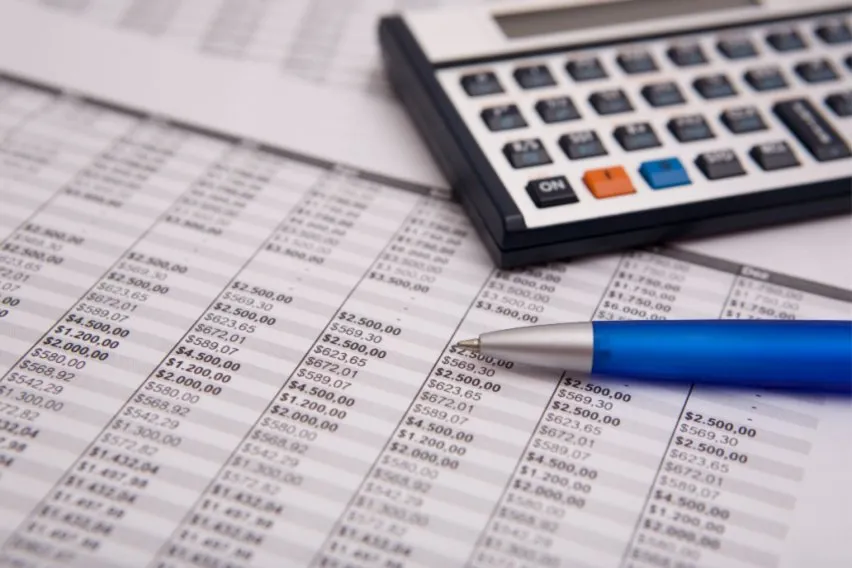What Is Payroll Accounting? Definition & Importance

Employee wages are one of the many things you’re going to have to worry about as small business owners. But there can be so much to consider. How do you process expenses and your employees’ wages? What about health insurance premiums and national insurance contributions? Are these included in the payroll process?
This is important payroll information you have to consider for your financial accounting. The good news is we’ve put together this guide to break down what you need to know about payroll accounting. Read on to learn more about its importance, different entry types, how to set it up, and more!
Table of Contents
What Is the Importance of Payroll Accounting?
Payroll Accounting Entries Types
Payroll Accounting: How to Set It Up
Payroll Accounting Calculations
How Accounting Software Can Assist With Payroll
What Is Payroll Accounting?
Payroll accounting is the process of tracking and filing employee compensation. This can include the money that gets withheld from employee paychecks. It can also include the benefits the employee receives, as well as the relevant taxes.
Accountants use financial journals to summarise the transactions within an organisation. This helps provide insights into total cash flow. A general ledger includes the main payroll entries. The general ledger contains a range of other financial information, as well.
Payroll accounting helps you track what you owe each of your employees. Using accounting software can help make this easier. Payroll accountants must use a high level of accuracy when compiling financial information.
They have to include all assets, liabilities, and expenses to adhere to the legal requirements.
Here are some of the most common details included in payroll accounting:
- Withholding certain employer and employee taxes
- Withholding insurance premiums and different savings plans
- Withholding salary
- Employer fringe benefits and expenses
- Gross wages
- Salaries
- Bonuses and commissions

What Is the Importance of Payroll Accounting?
Taking good care of payroll accounting can afford several benefits for you, your business, and your employees. It ensures you’re able to keep an accurate record of your expenses and helps you meet any legal requirements. It also provides you with insights into the total cost of your employees to your business.
Neglecting to satisfy any requirements may lead to financial penalties. When you can understand the information at hand, you’ll have a better idea about whether you can hire more employees. It allows you to make informed decisions about hiring part-time or full-time employees.
Payroll Accounting Entries Types
It’s very important to keep your payroll entries as clear and consistent as possible. This means you might need to regularly add new details instead of leaving everything until the end of your accounting period.
Payroll accounting entries will break down into three distinct forms. These are manual payments, accrued wages, and initial recordings. Let’s take a closer look at each of these and how they work.
Manual Payments
When you use manual payments, you must keep track of any unplanned adjustments. For example, manual payments can occur when you have an unplanned payment or when an employee stops working for your business.
Accrued Wages
At the end of each accounting period, you’re going to record any accrued wages. Essentially, you need to show and highlight the number of wages that are still owed to your employees that you haven’t paid yet. Yet, it’s important to recognise that accrued wages aren’t expenses and they are liabilities.
Initial Recordings
Initial recordings are the most common payroll accounting entries. They’re also referred to as originating entries since they are the first record you’re going to have of a transaction. These can include things such as gross wages, employer taxes, and any withholdings from employee wages.
Payroll Accounting: How to Set It Up
The good news is setting up payroll accounting can be an easy process if you’re using the right accounting software. This can ensure your entire accounting process is accurate and done properly. Plus, you can receive a clearer picture of where your business stands regarding payroll expenses.
Follow these steps to get your payroll accounting set up.
1. Find and set up the right accounting software for your business. This removes the need to manually enter all your payments which can be incredibly time-consuming.
2. Begin creating all of the relevant and necessary accounts for every expense type you have. This can include payroll taxes, bonuses, commissions, and employee compensation.
3. Set up recurring payments for each of your employees. The accounting software you use will make it easy to regularly pay your employees on time.
4. Process the payments to your employees for the work they complete.
5. Make sure that you reconcile your account on a regular basis. Your accounting and payroll software will typically do this for you, but it can always be a good idea to monitor it for accuracy.
One of the best things you can do when setting up payroll accounting is to know exactly what you need. The first thing you are going to do is record expenses. This means you will need to calculate the total amount of expenses you have and then debit your journal for the exact amount.
Next, you are going to need to record any liabilities. You can do this by calculating all of the liabilities you still need to pay on every transaction. Then, you are going to credit the specific amounts to the liabilities control accounts that you have.
Now you can start to make payments to the right person or place. For example, you have to pay HMRC taxes and national insurance payments you owe. You also need to pay your employees the amount you owe them.
The final step for payroll accounting is to begin the transition of closing out your books. Do this at the end of each accounting period and you are going to zero all of your accounts. From here, you can begin the process of producing new records for your next accounting period.
The easiest way to handle all of this is to use online payroll accounting systems that offer payroll services.
Payroll Accounting Calculations
Before you can start payroll accounting calculations, you’re first going to need a few bits of information. For example, you’ll need to determine primary items and gather all employee paperwork. From here, you can then calculate the sum of the payments, document expenses, and file relevant taxes. Let’s take a closer look.
The first thing you’re going to want to do is to sort all of the primary items needed for your payroll accounting. These include wages, benefits, and periods of payment for each employee.
All of these details should coincide with the payroll policy you put into place for your business. For example, you should have a policy that describes how to go about unpaid overtime, specific pay dates, the actual payment method, and more.
As well, labour law requires all businesses to specify if any special terms or deductions are part of a payment an employee will receive. Next, you’ll need to put together the relevant employee paperwork.
Every employee will need to have certain tax forms, like tax filing status and any other needed personal information. On top of personal information, you’ll also need employee banking information, such as the bank name, sort code, account number, and the SWIFT or IBAN.
Once you have all of this information, you can begin to set up direct deposits for each employee.
One of the final steps in calculating payroll is to ensure all information is accurate and where it needs to be. This could be spotting inconsistencies or any accidental mistakes. Once everything is good to go, you can begin to approve employee payroll and submit the needed payments.
The final step of payroll accounting calculations is to report all of your payroll records. You must do this for various organisational and tax purposes.
How Accounting Software Can Assist With Payroll
Payroll can often be not only confusing, but a time-consuming process to undertake on a regular basis. Using accounting software is going to significantly free up your time so you can focus on other areas of your business. Plus, accounting software is more accurate, ensuring everything you’re doing is being done properly.
Yet, there can also be a range of other benefits that come with using accounting software for payroll. These can include:
- Keeping things simple
- Ensuring you pay your employees properly and on time.
- Staying up-to-date with various payroll compliance requirements and tax requirements.
- Keeping certain costs down since you can manage every element of your accounting needs from one area.
- Making sure all the relevant taxes are accurate and up-to-date.
- Improving overall billing needs and ensuring employee hours match their wages.
- Removing any possibility of having various transposition errors.
- Increasing your overall ability when it comes to budgeting and data reporting.
Most small businesses use an accounting payroll system. And the best part is you can take care of everything, including inventory management and bookkeeping. Ultimately, this leads to higher accuracy, more reliability, and better time management.
Key Takeaways
Payroll accounting is the process of monitoring and filing employee compensation. This relates to any money that’s withheld from an employee’s paycheck. It also includes wage deductions and taxes. Using a payroll accounting system can make a big difference.
It helps not only with accuracy, but also allows you to better prepare your payroll accounting reports. You have to send these details to HMRC for taxes, expenses, and benefits. The three primary payroll entries are manual payments, accrued wages, and initial recordings.
FAQs on Payroll Accounting
Is Payroll an Asset or a Liability?
Payroll would be considered a liability. Assets are anything your company owns. Liabilities are anything that your business owes, such as employee compensation and taxes.
What Is the Payroll Journal Entry?
A payroll journal entry relates to recording the specific compensation that you owe your employees. These get entered into your business’s general ledger.
Who Prepares the Payroll?
Typically, a payroll accountant or someone from the finance department would prepare payroll. They would do this before each pay period.
What Is a Payroll Checklist?
A payroll checklist is a list of what you would need to include in payroll accounting. This can be very helpful to ensure you are including everything you need to.
RELATED ARTICLES


 What Is a Chargeback: Definition & How Does It Work
What Is a Chargeback: Definition & How Does It Work Profit and Loss Statement: What It Is, Importance & Example
Profit and Loss Statement: What It Is, Importance & Example Types of Budgets: 6 Common Budgeting Methods for Business
Types of Budgets: 6 Common Budgeting Methods for Business Retained Earnings: Definition, Formula & Example
Retained Earnings: Definition, Formula & Example Feasibility Study: Meaning, Types & Process
Feasibility Study: Meaning, Types & Process What Is Direct Debit Guarantee & Direct Debit Rules?
What Is Direct Debit Guarantee & Direct Debit Rules?